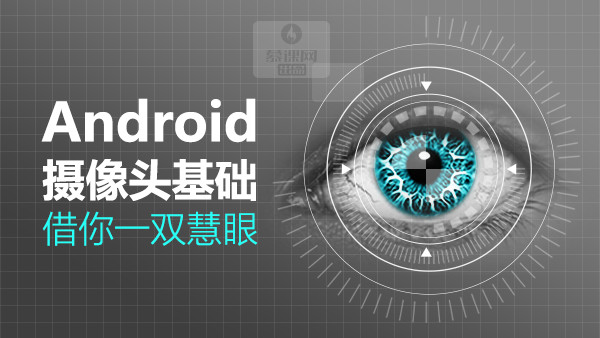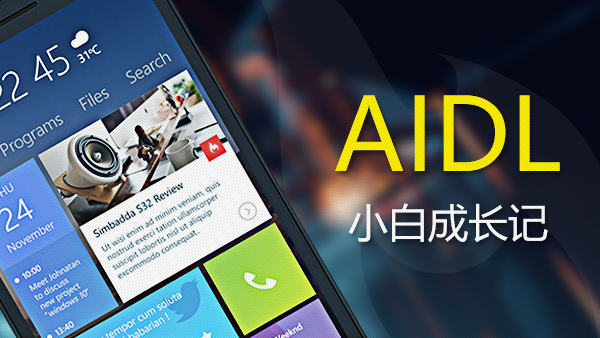前言
Material Design可谓是谷歌良心之作,其包含范围之广,以及各种高大上的酷炫效果,让人爱不释手。
Today,我们一起玩转Material Design中TextInputLayout,以及简要分析其源码,进一步拓展知识面。让你涨姿势~
本文目标
if you 耐心阅读完本文,你会get如下技能:
熟练掌握TextInputLayout使用;
继续分析源码,从源码角度分析问题,get技能
TextInputLayout 简述以及使用
首先,大家一定会想,TextInputLayout是个什么鬼?
从字面意思上来看,输入文本的一个布局,具体显示的效果便是上面放图中密码那块。原谅LZ语言描述的苍白无力~
> 默认时候,和普通的EditText毫无区别,获取焦点时,hint上移,可以对其定制化操作,比如动态显示用户输入字数长度,或者输入是否合法等等,操作还是比较骚气的~
话说这里需要注明一点:
必须设置hint啊,亲么(原谅我多此一举)
=====================这是一条分界线,下面要正式撸码了======================
1. 引入依赖
compile 'com.android.support:design:25.0.1'
2. 布局溜一眼
简要说明下:
app:hintAnimationEnabled="true": hint动画,默认开启,可设置关闭
app:errorEnabled="true": 是否开启错误提示
app:counterTextAppearance="@color/blue": 出现异常时hint颜色
那么布局中设置完毕后,怎么玩呢?继续瞅瞅~
3. 初始化 使用
mTextInputLayout = (TextInputLayout) findViewById(R.id.id_text_input); // 开启计数 mTextInputLayout.setCounterEnabled(true); // 设置合法最大输入 mTextInputLayout.setCounterMaxLength(6);
嗯哼,目前的效果是不是还不错?
这时候,有的小伙伴说了,当用户输入超出限制,我想给它一个提示,怎么搞?
俩步骚操作带你继续玩转
定义TextWatcher监听类
class MinLengthTextWatcher implements TextWatcher { private String mErrorMsg; private TextInputLayout mTextInputLayout; public MinLengthTextWatcher(TextInputLayout textInputLayout, String errorMsg) { this.mTextInputLayout = textInputLayout; this.mErrorMsg = errorMsg;
} @Override
public void beforeTextChanged(CharSequence s, int start, int count, int after) {
} @Override
public void onTextChanged(CharSequence s, int start, int before, int count) {
} @Override
public void afterTextChanged(Editable s) { if (mTextInputLayout.getEditText().getText().toString().length() <= 6) {
mTextInputLayout.setErrorEnabled(false);
} else {
mTextInputLayout.setErrorEnabled(true);
mTextInputLayout.setError(mErrorMsg);
}
}
}开启监听
mTextInputLayout.getEditText().addTextChangedListener(new MinLengthTextWatcher(mTextInputLayout, "密码只能6位数"));
当然关于校验这块,可以直接采用上述骚操作,也可以在提交时进行设置,并通过校验规则去动态设置errMsg即可。
好了,关于TextInputLayout使用暂时告一段落,下面开始分析源码操作。
TextInputLayout 源码分析
首先,我们先来了解下其内部继承关系:
public class TextInputLayout extends LinearLayout
这也算一个自定义View了,那么自定义View首先要做的就是继承并重写构造,那么接下来看下构造。
public TextInputLayout(Context context) { this(context, null);
} public TextInputLayout(Context context, AttributeSet attrs) { this(context, attrs, 0);
} public TextInputLayout(Context context, AttributeSet attrs, int defStyleAttr) { // Can't call through to super(Context, AttributeSet, int) since it doesn't exist on API 10
super(context, attrs);
}在这里,大家可以清晰的看到,三个构造。关于这里,LZ想说明一点,也是之前一个小哥儿们问的,为什么构造里前俩个都要写this?可能表述不是很清晰,下面单独摘出来,大家看下。
this(context, null); this(context, attrs, 0); super(context, attrs);
这样做的好处便是,只要用户调用其中一个,都能将事件传递下去,So,清晰get到自定义View一点小技能~
我们接下来瞧瞧最终进行事件处理的家伙如何进行处理
ThemeUtils.checkAppCompatTheme(context);
static void checkAppCompatTheme(Context context) {
TypedArray a = context.obtainStyledAttributes(APPCOMPAT_CHECK_ATTRS); final boolean failed = !a.hasValue(0); if (a != null) {
a.recycle();
} if (failed) { throw new IllegalArgumentException("You need to use a Theme.AppCompat theme "
+ "(or descendant) with the design library.");
}
}很明显,上来检测是否引用Theme或者Design包。接下来往下看
setOrientation(VERTICAL); // 设置显示方向
public void setOrientation(@OrientationMode int orientation) { if (mOrientation != orientation) {
mOrientation = orientation;
requestLayout(); // 自定义View中很有意思的一点
}
}这里大家可以看到,设置显示方向后,随即调用requestLayout()去进行重新测量绘制自身View
setWillNotDraw(false);
而继续深入,便能看到官方对其进行简要说明:
/** * If this view doesn't do any drawing on its own, set this flag to * allow further optimizations. By default, this flag is not set on * View, but could be set on some View subclasses such as ViewGroup. */
LZ英文比较弱鸡,大致可翻译为:
> 如果当前View不在自身上进行绘制操作,那么就设置此flag可被优化。默认情况下,这个flag是不会被设置到View中,但是可以在一些子视图好比ViewGroup中进行相关设置。
当然了,这块简单理解下,也就是当我设置false之后,也就不在自身上进行绘制操作。
setAddStatesFromChildren(true);
而这个却代表着将为子控件(children)添加状态。
而在接下来,new了帧布局并添加到当前容器中:
mInputFrame = new FrameLayout(context); mInputFrame.setAddStatesFromChildren(true); addView(mInputFrame);
添加到View中后,便通过一个Helper进行设置相关属性,类如文本字体大小、位置以及文本对齐方式,源码如下:
mCollapsingTextHelper.setTextSizeInterpolator(AnimationUtils.FAST_OUT_SLOW_IN_INTERPOLATOR); mCollapsingTextHelper.setPositionInterpolator(new AccelerateInterpolator()); mCollapsingTextHelper.setCollapsedTextGravity(Gravity.TOP | GravityCompat.START);
而下面的代码就比较easy了,就是简单设置一些属性以及TextInputLayout特有的属性,也可以理解为属性默认值,关键代码如下:
setErrorEnabled(errorEnabled); setCounterEnabled(counterEnabled); applyPasswordToggleTint(); // 应用密码根据不同状态显示对应颜色
关于setErrorEnabled,这里面需要说明一点,关键代码如上:
... if (Build.VERSION.SDK_INT >= 23
&& mErrorView.getTextColors().getDefaultColor() == Color.MAGENTA) { // Caused by our theme not extending from Theme.Design*. On API 23 and
// above, unresolved theme attrs result in MAGENTA rather than an exception.
// Flag so that we use a decent default
useDefaultColor = true;
}
...大致翻译为:
> 由于我们的主题不是引用自Theme.Design包中,在API23以及之上,未解决的主题attrs结果是红色而不是一个异常。
最终通过调用setAccessibilityDelegate()辅助功能类进行相关操作,例如查找节点或者事件相应等等。
那么到这里,我们再次回过头去看一下上面遇到的Helper是个什么鬼?
static {
DEBUG_DRAW_PAINT = DEBUG_DRAW ? new Paint() : null; if (DEBUG_DRAW_PAINT != null) {
DEBUG_DRAW_PAINT.setAntiAlias(true);
DEBUG_DRAW_PAINT.setColor(Color.MAGENTA);
}
}static静态代码块会优先执行,方便之中还是要少使用为妙。
这里我们看到了Paint画笔,这个神器的东西,不等于null的时候,开启抗锯齿以及设置画笔颜色。
在Helpter构造中,初始化了如下参数:
public CollapsingTextHelper(View view) {
mView = view;
mTextPaint = new TextPaint(Paint.ANTI_ALIAS_FLAG | Paint.SUBPIXEL_TEXT_FLAG);
mCollapsedBounds = new Rect();
mExpandedBounds = new Rect();
mCurrentBounds = new RectF();
}实例化了一个TextPaint以及实例化了3个矩形区域,那么这时候,有的小伙伴会问了,3个矩形是什么啊?
大家可以想一下,简洁明了的看,分为如下模块:
获取焦点时,hint往上动画移动;
开启长度校验后,文本右下角显示当前输入长度;
开启异常提醒后,文本左侧下方当用户输入不合法时,提示用户。
三个矩形所代表的含义如上,简单说明了。
其实到这里,本文也该差不多了,因为接下来的东西属于自定义View相关了,例如如何计算左上右下,以及动画,计算绘制以及真正开始draw,这些东西将在后续自定义View模块进行具体说明,有兴趣的可以了解下。
GitHub查看地址
> https://github.com/HLQ-Struggle/MaterialDesignStudy
参考资料
> 1. 谷歌API:https://developer.android.google.cn/reference/android/support/design/widget/TextInputLayout.html;
后记
接下来,依然会继续学习有关Material Design部分,感谢大家查阅~

 随时随地看视频
随时随地看视频




